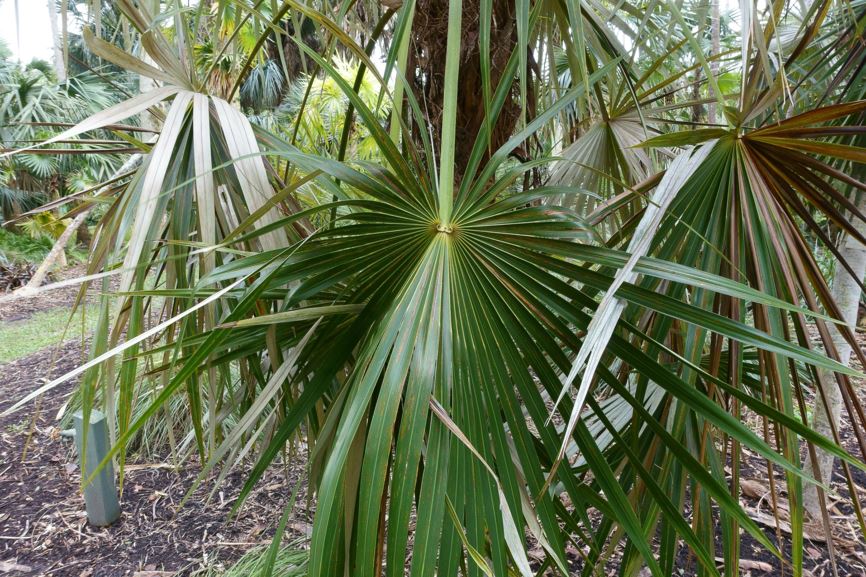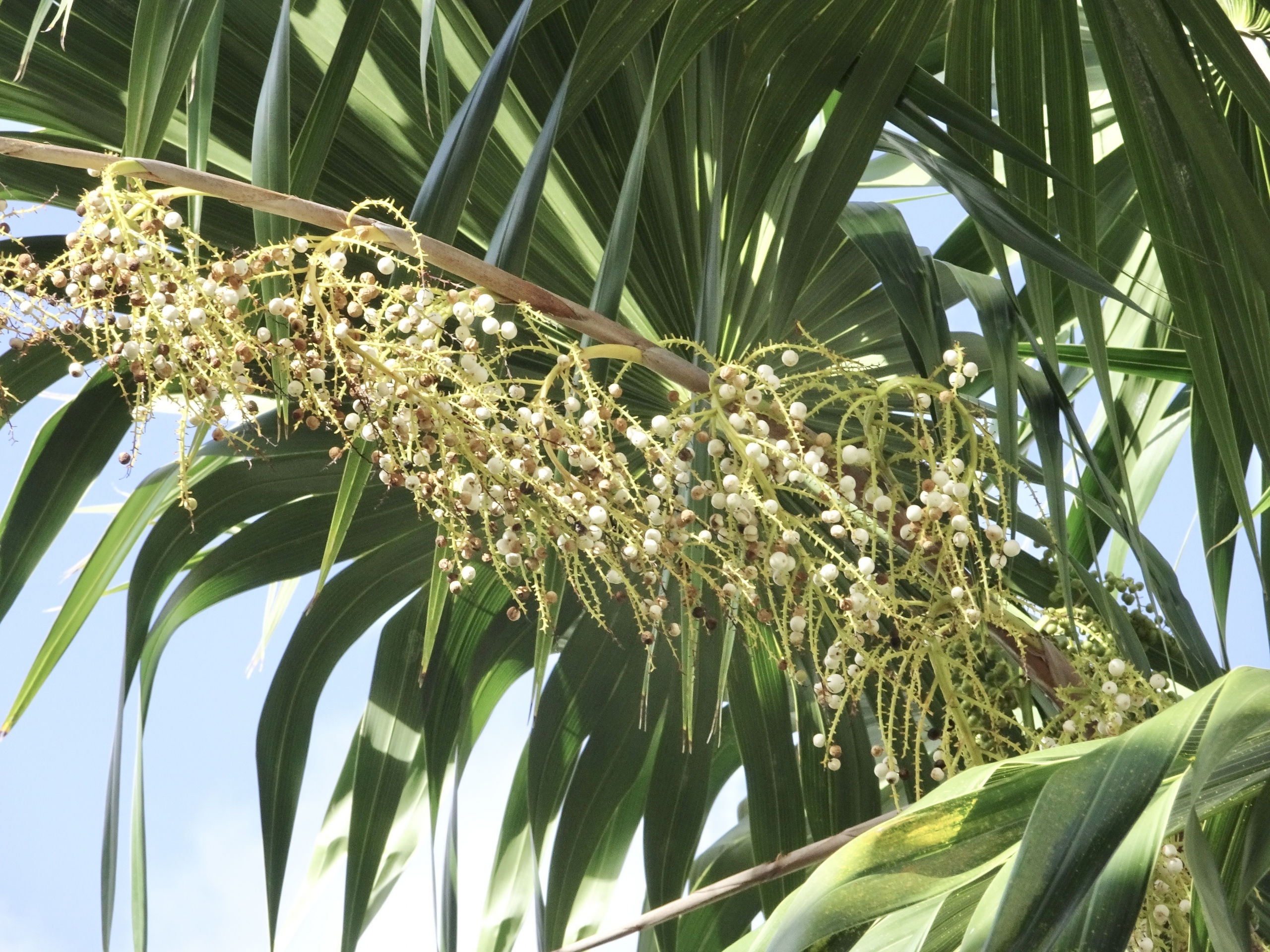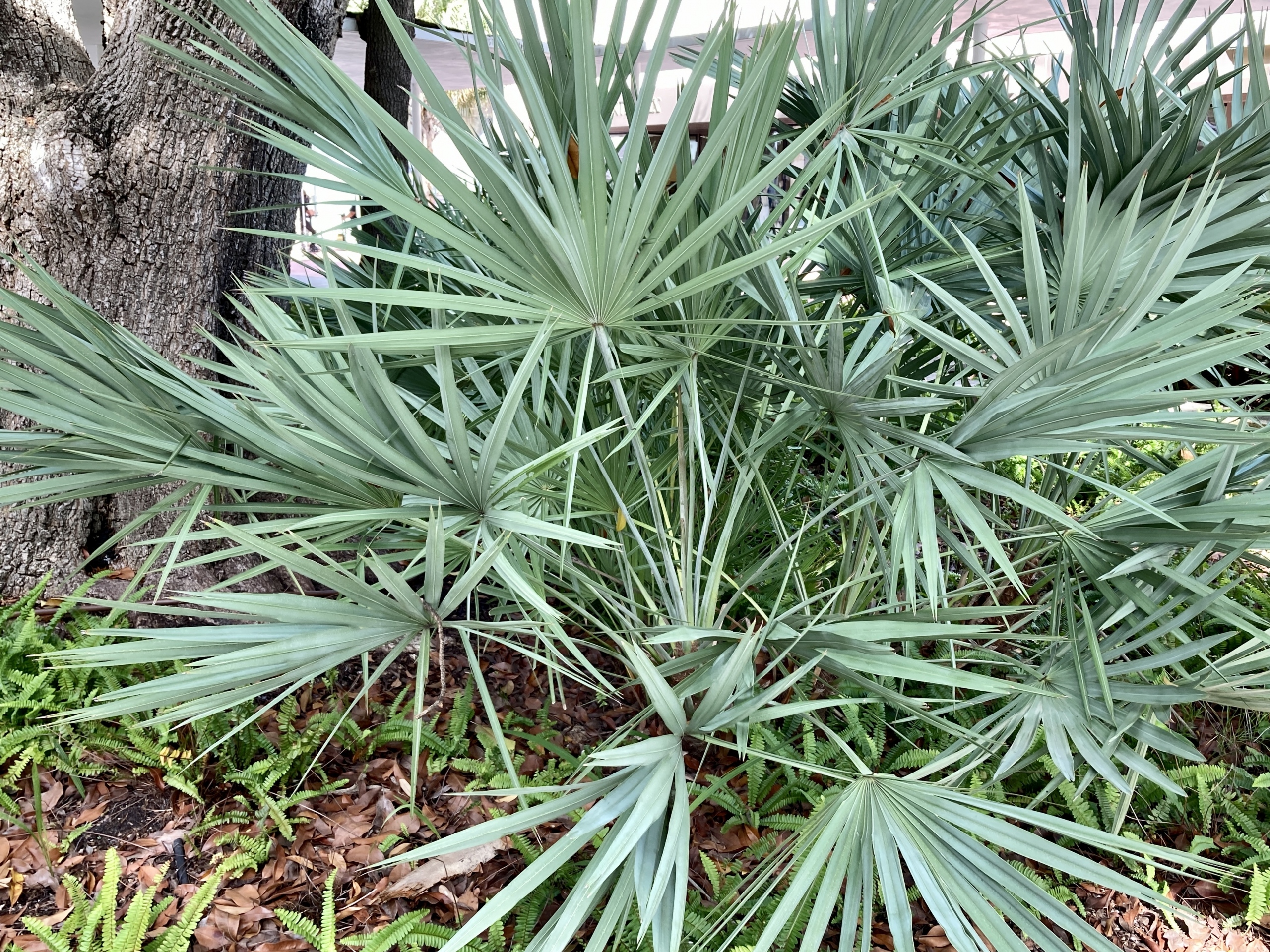What’s in a Name: 11 of Florida’s Native Palms
To master palm names, you must have an encyclopedic mind, as there are between 2,500 and 2,600 species. New palms are discovered regularly and old palms undergoing DNA analysis may turn out to be new as well.
We’ll start with a manageable list: Florida’s native palms. There are 11 palms native to Florida, most of them residents of South Florida and the Caribbean. One exception is the needle palm, Rhapidophyllum hystrix, which grows from northern Florida to coastal South Carolina. In “The Encyclopedia of Cultivated Palms,” Paul Craft, Robert Lee Riffle and Scott Zona wrote that the palm may be a vanishing relic species, as it is nearly extinct.
- Acoelorrhaphe wrightii
Everglades or paurotis palm. The genus name is derived from Greek words meaning “without,” “hollow,” “fold,” “seam,” which refer to the physical characteristics of the seed covering. Wrightii honors Charles H. Wright, a 19th-century American botanist, according to “The Encyclopedia of Cultivated Palms.”
- Coccothrinax argentata
Silver palm. Cocco, from Greek for a berry; thrinax, relating to a genus of fan palms with berry-like fruit. Argentata is from the Latin for silvered.

- Leucothrinax morrisii
Keys thatch palm. Leuc signifies white for the color of the undersides of the fronds; morrisii is for 19th-century British ethnobotanist David Morris.
- Pseudophoenix sargentii
Sargent’s cherry palm. The genus pseudo means false and phoenix is date palm—the name means “not a date palm.” The epithet honors Charles Sprague Sargent, who was the first director of Harvard University’s Arnold Arboretum in the 19th century. Sargent wrote the 14-volume “Silva of NorthAmerica” and headed the Arboretum for 54 years.
- Thrinax radiata
Florida thatch palm. Thrinax is from the Greek for trident, referring to the leaf shape. Radiata refers to the shape of the leaves, and means “radiating form.”

- Sabal etonia
Scrub palmetto. “The etymology of the name was never explained by its author,” according to Riffle, Craft and Zona. “Stearn’s Dictionary of Plant Names for Gardeners” suggests it is “possibly from the South American name for these spineless palms.” Etonia is a corruption of an Amerindian name for the scrub ecosystem of Central Florida.
- Sabal minor
This dwarf palmetto’s epithet means small.
- Sabal palmetto
Cabbage palm. Palmetto means little palm.
- Rhapidophyllum hystrix
Needle palm. Raphis is Greek for needle; phyllum is leaf. Hystrix means bristly or porcupine-like.
- Roystonea regia
Royal palm. Roystonea is for Gen. Roy Stone, an American engineer in Puerto Rico. Regia means regal or royal.
- Serenoa repens
Saw palmetto. The genus is named for Sereno Watson of Harvard University, an American botanist who named and described many new species in western and middle North America.
Repens means creeping.

This article was written by Georgia Tasker and originally published in the Fall 2014 of the Tropical Garden. Minor changes from the print version of this article were introduced to improve readability in a digital format.
